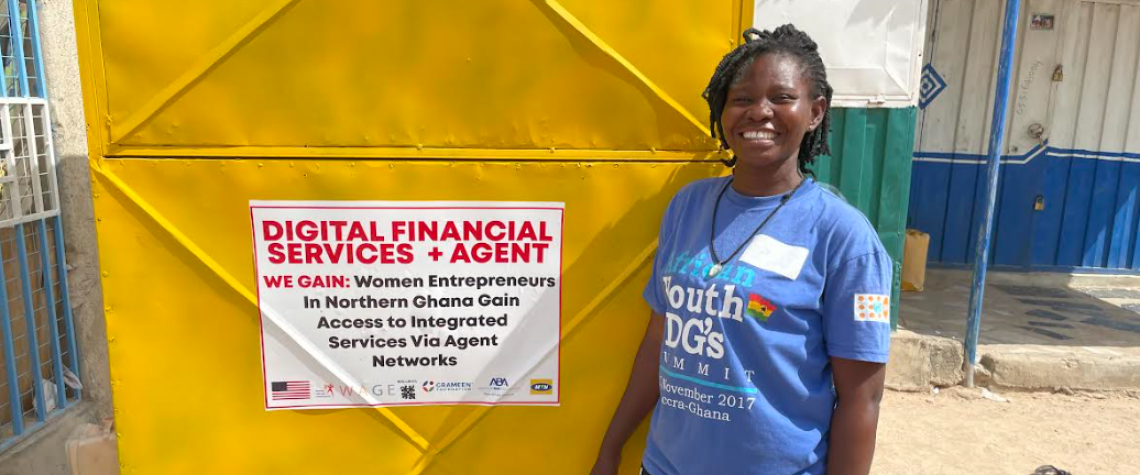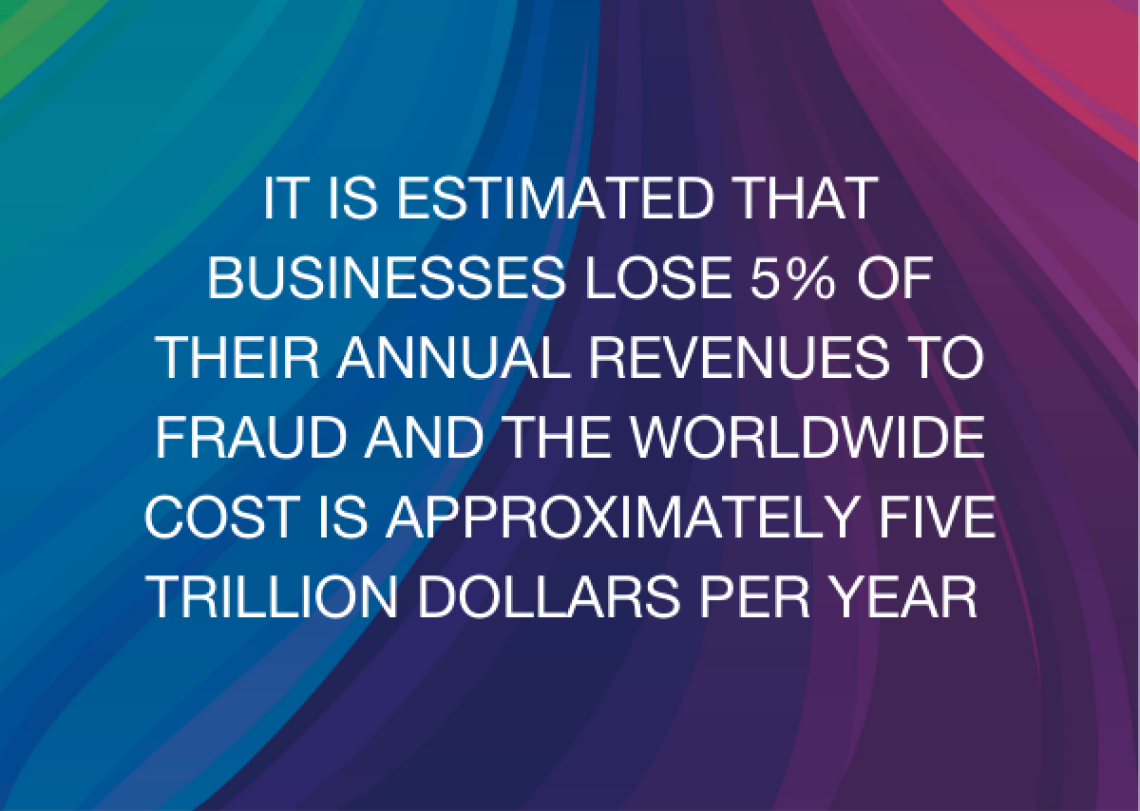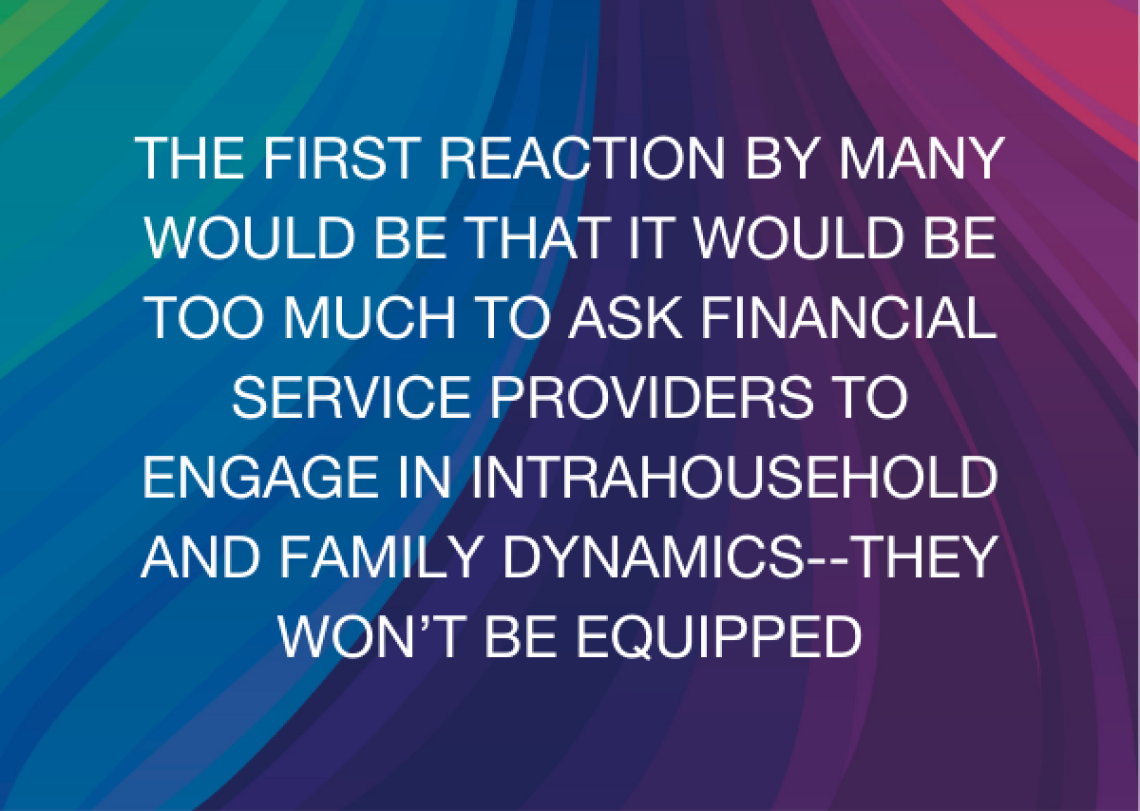Make your 2X MATCHED gift today!
This week only: Every $1 will be matched with $2 to enable women worldwide.
This week only: Every $1 will be matched with $2 to enable women worldwide.
Posted on 10/10/2024
Mobile money and the digitalization of financial transactions have proven to be valuable tools around the world for financial inclusion and end-user empowerment, particularly among women. Digital financial services (DFS) can decrease costs to the user to access savings, credit, payment and insurance, increase privacy, control over income, among other longer-term benefits.
Despite these benefits, as women’s use of DFS increases, so does their exposure to fraud from both people they know and don’t know. In some of my early interviews on financial abuse with large financial institutions in the United States, any misuse of a person’s accounts by an unauthorized person is often referred to a fraud department, whether the perpetrator is known (as might be the case in elder abuse or intimate partner violence) or unknown (as might be the case when a criminal halfway around the world scams another person out of their money).
This blog seeks to understand the link between financial abuse and fraud to both understand their relationship (or lack thereof) and to explore any lessons that can be gleaned about addressing fraud that can inform strategies to address financial abuse.

Research by Tavneet Suri of the MIT Sloan School of Management and William Jack of Georgetown University on the impact of mobile money, a financial service that allows a person to store monetary value on their mobile phone and send this money via text messages to other people, found that Kenyans’ access to this service increased their consumption and lifted 2% of Kenyan households out of poverty.
This was especially true for women as it increased their financial resilience and saving behaviors and helped them move out of agriculture into business. Mobile money also allows more efficient transactions between rural and urban areas and in many cases also facilitates cross-border remittances. Similar benefits have been found in several other countries as well. Research has also shown that women’s use of mobile money can help them to gain independence in making financial decisions.
This can be important for women seeking to exit abusive relationships as they can privately open mobile money accounts with few requirements and either in the privacy of their own homes or at places of business where they already have permission to frequent.
But first, let’s look at the definitions. “Fraud occurs when someone uses deceitful tactics to illegally or unethically make a gain at the expense of someone else. The process involves the false representation of facts, whether by withholding information or providing false statements to gain something that would not have been provided without the deception.”
The most pervasive type of fraud is identity theft, which refers to “all types of crime in which someone wrongfully obtains and uses another person's personal data in some way that involves fraud or deception, typically for economic gain”.
Typically, criminals use another’s identity to submit false applications for loans and credit cards, fraudulently withdraw money from bank accounts or use another’s online accounts or to obtain goods or privileges which the criminal might be denied if using his own name.
Experiencing identity theft can leave victims with irreparable damage, often before victims are even aware.
In the most recent Financial Inclusion Compass financial service providers ranked fraud against customers as the second most important priority in the sector, after innovative product design. It is estimated that the worldwide cost of fraud is approximately five trillion dollars per year and businesses lose 5% of their annual revenues to fraud. Those statistics would make anyone take notice.

Now we know what fraud is, let’s compare it to financial abuse.
In our first blog in the financial abuse series, we defined financial abuse as a restriction of “a person's ability to acquire, use, and maintain financial resources, ensuring financial dependency on an abuser. It's often used as a control tactic that ranges from sabotaging work opportunities to restricting access to credit or seizing funds and earnings." Some financial abuse tactics can be considered a form of fraud since “financial abuse is when someone takes or misuses another person’s money or property for the benefit of someone other than that person”.
The main difference is whether the perpetrator is known by the victim.
This raised a few questions for me:
Question 1: To what degree would linking financial abuse and fraud together be the “hook” for the financial services sector to address financial abuse? What lessons can be drawn to inform our work on financial abuse?
In consultations with a few experts and review of the literature on fraud and financial abuse, it seems that while fraud and financial abuse could be linked together when there is misuse of someone’s information to open accounts, drain accounts or take out credit without authorization by the client -- financial abuse stems from intrahousehold/family power dynamics while fraud could be committed by someone from halfway around the world.
The first reaction by many would be that it would be too much to ask financial service providers to engage in intrahousehold and family dynamics--they won’t be equipped.
It would be hard to regulate and it wouldn’t be realistic. However, what we can learn about fraud prevention to inform what financial service providers can do to prevent financial abuse is the importance of educating the customer about how to protect themselves and where and how to seek support when financial abuse occurs. Customers and financial institutions both have skin in the game. In fact, customers expect their financial institutions to take some responsibility when there is fraudulent use of their account--even when the customer authorized a transaction that led to the fraud. For example, a recent LexisNexis report showed that 66% of U.S. consumers would likely close their accounts with a financial institution that failed to reimburse them for losses due to authorized transfer scams.

Question 2: When I started my research on financial abuse, I ran across a reference to an experience in Australia where they noted abusers were using the “memo” line in digital payments to send threatening messages to their ex-partners. It was the first time I’d ever thought about how a benign memo description could be used to threaten someone. But as experts in financial abuse have said, perpetrators will find creative ways to use the financial system to abuse someone. Are there any lessons that can already be drawn from efforts to digitally prevent fraud to inform responses by financial services providers to digitally prevent financial abuse by a family member?
Preventing fraud within the financial system is a massive and ongoing effort. Basic client protection literacy training always includes the importance of selecting strong passwords, not sharing these passwords or saving them in places easily accessible by others, and periodically changing them. Beyond passwords, as you use technology to build in safeguards, criminals leverage the same technology to locate weaknesses. For example, artificial intelligence (AI) can be used to predict whether a customer’s behavior seems “normal” based on prior behaviors, but AI is also being used to create synthetic identities that makes it easier for criminals to request credit in someone else’s name. AI can also be used to flag when abusive language might show up in a memo line for a digital payment, but it also has the potential of flagging benign memos depending on how words are used. It is still imperfect.
As with fraud, we have to understand the consumer journey and where the greatest risks for financial abuse are to close windows of opportunity for someone to misuse another’s accounts. You have to find balance between customer satisfaction and convenience and security. This is called “friction”--these are the steps that are put in place that authenticate a transaction, such as validating a person’s identity through Know Your Client (KYC) processes, to allow time to determine whether it is authorized. For example, a customer can be asked, “Are you trying to make a transaction with X company?” before a payment is made.
Alerting a client of an abnormal transaction is one way to detect fraud and financial abuse and put some power back into the client’s hands to validate transactions in real-time. However, the challenge with financial abuse is that financial service providers do not have the power to fix the root causes of financial abuse unless the end user seeks support that is aligned with the capacities of a financial service provider, such as replacing a joint account with an individual account.
Question 3. We know that fraud/financial abuse can occur in a digital environment but what about when we’re not working in a digital environment? Grameen Foundation still has partners who rely on frontline staff to facilitate financial transactions at the clients’ doorstep (or at a group in their community) or at a branch office. What is there to learn about experiences with fraud prevention and financial abuse?
Relationship banking--where there is a personal engagement between a bank teller or frontline worker and the client--is where fraud is often detected. With elder abuse, for example, when someone takes control of an older person’s accounts due to reduced mental capacity or physical disabilities, a bank teller might already know the client because he or she frequents a branch office.
They understand their client and can study their transactions and account when the client visits. A frontline worker might know informally from discussion within a women’s village bank, for example, that she’s experiencing issues at home and can make recommendations on how to protect her assets. But as noted earlier, it has to start with educating the client about fraud and financial abuse--they have to be aware that potential exists for them to experience harm from it, how they can prevent it, and that if it occurs, how the financial institution is capable of supporting and responding.